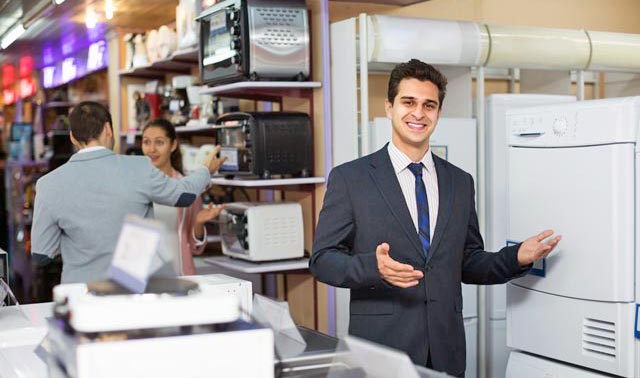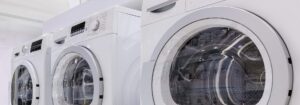Energy-efficient appliances are designed to use less energy to perform the same tasks as their less efficient counterparts.
Opting for energy-efficient appliances offers several benefits, both for individuals and the environment. While the initial cost of purchasing these appliances may be higher, the long-term savings on energy expenses can offset the upfront investment.
Additionally, energy-efficient appliances may come with innovative features and improved performance, providing better user experiences and enhanced functionality.
When buying home appliances, look out for the energy ratings label. These labels are designed to help consumers make informed decisions about the energy performance of appliances and encourage the purchase of more energy-efficient models.
How do energy labels work?
Energy labels serve as informative guides for consumers, providing details about the energy efficiency of appliances.
The primary feature of an energy label is the energy efficiency rating. This rating is often displayed as a letter scale (A to G in many cases), with ‘A’ indicating the highest level of energy efficiency and ‘G’ the lowest.
When shopping, look for these labels and consider the energy efficiency rating, comparative information, and additional details provided to make an informed decision that aligns with your energy-saving goals.
Energy Efficiency Laundry
Energy-efficient washing machines
Energy-efficient washing machines are designed to reduce energy consumption and water usage while maintaining effective cleaning performance. Look for washing machines with the Energy Star label, indicating that they meet or exceed energy efficiency guidelines set by the authorities.
Energy-efficient washing machines often incorporate water-saving features. Front-loading machines typically use less water than top-loading machines, and some models offer additional water-saving settings.
Look for machines with variable spin speed settings. Higher spin speeds can extract more water from clothes during the wash cycle, reducing the need for extended drying time and saving energy.
Many modern washing machines feature load sensing technology, adjusting the water level based on the size of the laundry load. This helps prevent unnecessary water and energy waste for smaller loads.
Energy-efficient tumble dryers
Energy-efficient tumble dryers are designed to provide effective drying while minimizing energy consumption. Tumble dryers use an energy label scale of A to G. An appliance with a low energy rating is less efficient than one with a high rating. Choosing an A-rated one over a G-rated could save you up to 60% energy.
Tumble dryers with heat pump technology are highly energy-efficient. They recycle and reuse heat during the drying cycle, consuming less energy compared to traditional vented or condenser dryers.
Additionally, tumble dryers equipped with sensor drying technology detect the moisture level in the clothes and adjust the drying time accordingly. This feature prevents over-drying, saving energy and preserving the quality of your clothes.
Some dryers have sensors that detect the size of the load. This information is used to optimise the drying process, ensuring that the dryer operates efficiently even with smaller loads.
By considering these features, you can select an energy-efficient tumble dryer that aligns with your laundry needs while minimising energy consumption and operating costs.
Energy efficient fridge freezers
Energy-efficient refrigerators are designed to keep your food fresh while consuming minimal energy. When shopping for a fridge freezer, checking the energy label and choosing a model with a higher energy efficiency rating can contribute to energy savings and lower electricity bills.
An A-rated fridge freezer is designed to consume less electricity, making it more environmentally friendly and cost-effective to operate over time. These appliances often incorporate features such as improved insulation, efficient compressors, and advanced temperature control systems to reduce energy consumption.
Choose a fridge that suits the size of your household and your storage needs. Larger fridges generally consume more energy, so it’s essential to find a balance between capacity and energy efficiency.
Additionally, refrigerators with automatic defrosting systems help maintain optimal energy efficiency. Manual defrosting can increase energy usage, so an automatic system is preferable.
Opt for a fridge with adjustable temperature controls. This allows you to set the temperature according to your preferences and the type of food you are storing, preventing unnecessary energy consumption.
Modern refrigerators come equipped with inverter technology. Refrigerators with inverter compressor technology operate more efficiently by adjusting the compressor speed based on the cooling demand. This technology helps maintain consistent temperatures with lower energy consumption.





